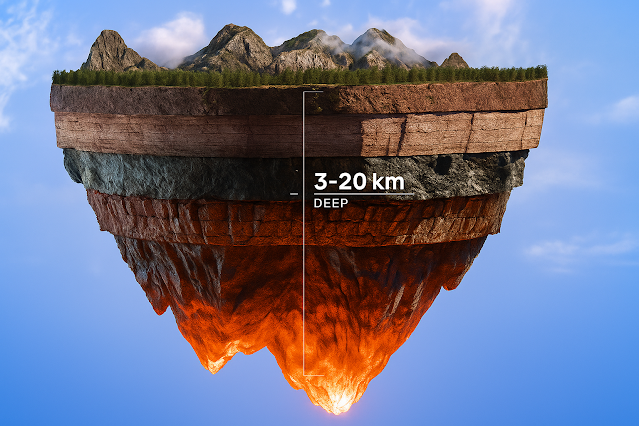Geothermal Game-Changer
As global interest in renewable and sustainable energy sources grows, geothermal energy is gaining attention for its consistency and low environmental impact. The energy shaft—an innovative vertical geothermal structure—holds immense promise in this field. Accurate modeling of heat transfer between the shaft and surrounding soil is crucial for designing efficient systems and evaluating field performance. This study introduces a novel cylindrical concrete test structure specifically designed for thermal response testing. By simulating energy shafts more realistically and enabling real-time thermal property analysis, the research aims to improve the accuracy of data, reduce errors, and offer practical benefits for engineering applications.
Importance of Real-Time Thermal Property Analysis in Geothermal Systems
Real-time thermal property assessment plays a pivotal role in optimizing geothermal energy systems. Traditional models often overlook the heterogeneity between structural materials and surrounding soil, leading to potential inaccuracies. The study emphasizes how a real-time thermal response experiment, coupled with a refined model, allows engineers to understand transient heat behaviors more effectively. This enables timely decisions during construction and system design, reducing delays and ensuring more accurate long-term energy output predictions.
Design Innovation: Cylindrical Concrete Test Structures for Field Applications
A standout feature of this research is the design of a specialized cylindrical concrete structure that better mimics actual energy shaft behavior during thermal response tests. This structure provides a stable testing environment while accounting for the thermal discrepancies between shaft materials and soil. Unlike previous models relying on linear or hollow column assumptions, this approach reduces environmental and material uncertainties, enhancing the validity of experimental results and supporting cost-effective infrastructure development.
Development and Application of an Unsteady Heat Transfer Model
Using superposition theory, the research team developed an advanced unsteady heat transfer model tailored for energy shafts. The model considers layered material differences and dynamic thermal interactions, addressing flaws in earlier models that treated the system as homogenous. This innovation bridges theoretical precision and field practicality, enabling engineers to conduct detailed yet manageable thermal calculations in diverse geotechnical contexts.
Comparative Performance Evaluation with Traditional Models
When compared with traditional linear and hollow column heat source models, the new model demonstrated superior accuracy in capturing the thermal dynamics of energy shafts. It effectively reduces computational errors caused by oversimplified assumptions, especially in environments with varying soil conditions. Furthermore, while matching the performance of solid column models in accuracy, the new method significantly reduces computational workload, making it a practical tool for routine field testing.
Implications for Engineering Design and Future Applications
The research findings present significant implications for both academic and field applications. By offering a simplified yet precise method for calculating thermal conductivity and internal thermal resistance, this model enhances the ability of engineers to make informed design decisions. Its adaptability to different site conditions ensures broader usability, promoting standardized, cost-effective solutions for energy shaft development. This research not only advances thermal response testing methodologies but also lays a strong foundation for scaling geothermal technologies worldwide.
Technology Scientists Awards
#EnergyShaft
#ThermalResponseTest
#HeatTransferModel
#SustainableEngineering
#RenewableEnergy
#SoilThermalConductivity
#ConcreteTestStructure
#GreenTechnology
#EnvironmentalEngineering
#EnergyEfficiency
#ThermalModeling
#UnsteadyHeatTransfer
#GeotechnicalEngineering
#SmartEnergySolutions
#FieldExperiment
#ThermalSimulation
#InnovativeDesign
#CleanEnergyFuture
#UndergroundEnergy




Comments
Post a Comment